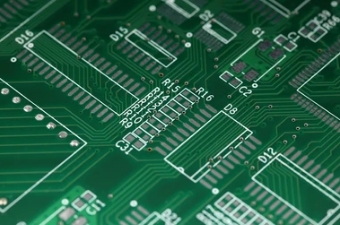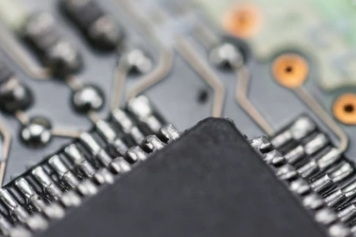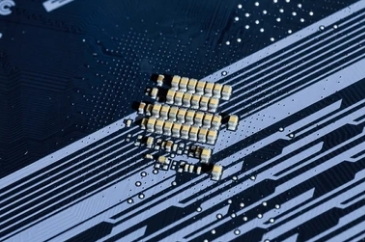Content Menu
● Understanding SMT Manufacturing
● Core Components of SMT Manufacturing
● The SMT Manufacturing Process
● Advantages of SMT Manufacturing
● Challenges in SMT Manufacturing
● Conclusion
● Related Questions
>> 1. What is Surface Mount Technology (SMT)?
>> 2. What are some common types of Surface-Mount Devices?
>> 3. How does reflow soldering work?
>> 4. What equipment is essential for an SMT manufacturing line?
>> 5. What are some common defects in SMT assembly?
Surface Mount Technology (SMT) has revolutionized the electronics manufacturing industry by allowing for the direct attachment of electronic components to the surface of printed circuit boards (PCBs). This method offers numerous advantages over traditional Through-Hole Technology (THT), including increased efficiency, reduced costs, and the ability to create more compact designs. In this article, we will explore the core components used in SMT manufacturing, the processes involved, and the significance of SMT in modern electronics.

Understanding SMT Manufacturing
SMT Manufacturing Meaning
SMT manufacturing refers to a process where electronic components, known as Surface-Mount Devices (SMDs), are soldered onto the surface of PCBs without the need for drilling holes. This technique allows for a higher density of components on a board and supports automated production processes. The rise of SMT began in the 1980s and has since become a standard in electronics assembly due to its efficiency and cost-effectiveness.
Core Components of SMT Manufacturing
The SMT manufacturing process involves several key components and equipment that work together to ensure high-quality assembly. Below are some of the essential components used in SMT manufacturing:
- Printed Circuit Boards (PCBs): The foundation of any electronic device, PCBs provide the physical structure for mounting components. They are designed with pads where SMDs will be attached.
- Surface-Mount Components (SMDs): These are the actual electronic parts that are mounted on the PCB. Common types include resistors, capacitors, inductors, diodes, and integrated circuits (ICs). SMDs are designed with small footprints to facilitate high-density assembly.
- Solder Paste: A mixture of solder and flux that is applied to the PCB pads before component placement. Solder paste acts as an adhesive to hold components in place during soldering.
- Stencil: A thin sheet with openings that correspond to the solder pads on the PCB. It is used to apply solder paste accurately onto the pads.
- Pick and Place Machines: Automated machines that pick up SMDs from reels or trays and place them onto the PCB at specified locations. These machines are crucial for achieving high-speed assembly with precision.
- Reflow Oven: A specialized oven used to heat the assembled PCB, melting the solder paste and creating electrical connections between the SMDs and PCB pads. The reflow process typically involves several temperature zones to ensure proper soldering.
- Automated Optical Inspection (AOI): A quality control system that inspects PCBs after assembly to detect defects such as misaligned components or insufficient solder.
The SMT Manufacturing Process
The SMT manufacturing process can be broken down into several key stages:
1. PCB Preparation: This initial stage involves designing the PCB layout and preparing it for assembly. The design must account for component placement, trace routing, and solder pad specifications.
2. Solder Paste Printing: Using a stencil, solder paste is applied to the designated pads on the PCB. This step is critical as it ensures that each pad receives the correct amount of paste.
3. Component Placement: The pick and place machine accurately places SMDs onto the solder-pasted pads. Precision in this step is vital for ensuring reliable connections.
4. Reflow Soldering: The assembled PCB is passed through a reflow oven where it is heated to melt the solder paste, forming solid electrical connections between components and pads.
5. Inspection: After reflow soldering, AOI systems check for defects such as misalignment or insufficient solder joints. Any issues identified may require rework or adjustment.
6. Final Testing: Once inspected, PCBs undergo functional testing to ensure they operate correctly before being packaged for distribution.

Advantages of SMT Manufacturing
SMT offers several advantages over traditional manufacturing methods:
- Higher Component Density: SMT allows for more components to be placed on both sides of a PCB, optimizing space utilization.
- Reduced Size and Weight: Smaller components lead to lighter devices, which is particularly beneficial in portable electronics.
- Increased Production Speed: Automation in SMT reduces manual labor and speeds up production times significantly compared to THT methods.
- Cost Efficiency: While initial setup costs may be higher due to equipment investment, overall production costs tend to decrease due to lower material usage and faster assembly times.
- Improved Reliability: The absence of drilled holes minimizes stress on components and enhances durability against vibrations or shocks.
Challenges in SMT Manufacturing
Despite its many benefits, SMT manufacturing also faces challenges:
- Complexity of Rework: If a defect occurs during assembly, correcting it can be more complex than with THT due to tightly packed components.
- Thermal Management: Smaller devices generate heat more efficiently; thus, managing heat dissipation becomes crucial in design considerations.
- Soldering Issues: Common defects such as solder bridging or tombstoning can occur if proper techniques are not followed during assembly.
Conclusion
In summary, SMT manufacturing plays a critical role in modern electronics by enabling efficient production processes that support high-density assemblies. With its core components—including PCBs, SMDs, solder paste, pick and place machines, reflow ovens, and inspection systems—SMT streamlines assembly while offering significant advantages over traditional methods. As technology continues to evolve, so too will SMT practices, further enhancing productivity and reliability in electronic manufacturing.

Related Questions
1. What is Surface Mount Technology (SMT)?
Surface Mount Technology (SMT) is a method used in electronics manufacturing where components are mounted directly onto the surface of PCBs instead of being inserted through holes as seen in Through-Hole Technology (THT).
2. What are some common types of Surface-Mount Devices?
Common types include resistors, capacitors, inductors, diodes, and integrated circuits (ICs). These devices are specifically designed for surface mounting due to their compact size.
3. How does reflow soldering work?
Reflow soldering involves heating an assembled PCB in an oven where solder paste melts and forms connections between SMDs and PCB pads as it cools down again after heating.
4. What equipment is essential for an SMT manufacturing line?
Essential equipment includes solder paste printers, pick and place machines, reflow ovens, automated optical inspection systems, and various handling devices for PCBs.
5. What are some common defects in SMT assembly?
Common defects include solder bridging (unintended connections between pads), cold solder joints (poorly formed joints), tombstoning (where one end of a component lifts off), and insufficient solder application.




















